Friday I took a personal day from school to go to the circus with my daughter Emma's class from school. I got to walk all of the boys in her class to the bathroom before we left for the Pepsi Arena. As a high school teacher, I am not used to the walking in line trick. As they all got out of the bathroom they got in line and I thought it would be cool to teach them how to walk like Elephants back to the classroom ... what an entrance.
The kids were great the entire day, I was impressed. I haven't been to the circus since I was a kid. I know that a lot of circus shows have a bad rap right now but I was really impressed at the Ringling Bros., Barnum and Bailey Circus production. The horses, dogs and goats looked great. The Elephants looked great and the tigers were what I was waiting for. The actually set up the tiger act during the intermission. I was 50 foot away and watched it all. Very professional, very well done and the tigers were fat and into the routine. I am not giving my endorsement to animal acts, but I didn't see anything that I didn't like and I was looking.
On Saturday, my day started with my 4:30 am wake-up call from the 'coons. Gayle and I got to do something that all wildlife rehabbers love; we went on a release to one of my favorite release sites. We took John and Donna with us, they are the folks that brought us the raccoon that we rehabbed overwinter. I also released the red fox that was brought to me in a trunk of a car one night after the ladies picked him out of the road. Gayle took some great photos of the release which she will add to my blog so you can see what it looked like. Gayle is invaluable to NY Wildlife Rescue Center and getting our message out to you on the web. (Thanks Gayle)


Or you can view the entire photo album here
When we got back to the facility it was a zoo as usual. I had Justin and Shep show up to volunteer to work on the Raptor Center ceiling. Gayle and I got some photos of the Mammal area, the construction of the Raptor enclosures and of course--the animals.

We worked all day on the ceiling (100 foot) and finished it by 11pm. Got a couple of the walls framed out as well. I was thinking that things were going too well and the phone rang. Latham Emergency Vet Clinic had a Redtailed hawk and 7 baby cottontail rabbits that someone had brought in that they wanted me to come and get. While John and Justin worked on framing, I drove the 2 hours to get the animals from Latham. They had everything packaged up and waiting for me, they had done an xray on the hawk for me which showed nothing broken. They donated their services and that is something that every wildlife rehabber appreciates. When we volunteer our time, spend thousands of hours doing what we do, spend huge amounts of our own money, everything--donated helps keep us going.
Got back from the Vet Clinic, finished up with construction clean up and called it a night at 1:30. Didn't hear the alarm in the office go off at 4:30 am but the raccoons did. Glad they got me up because my wife Darcy didn't hear the alarm in the house either. I woke my son Jacob up because Darcy had to run him to the airport at 5am; the lucky kid gets to go to Florida with his Uncle Scott and his Grandparents to see the last launching of the space shuttle tomorrow to fix the Hubble telescope. Little bum is probably swimming right now as I write this.
I called off construction on the Raptor Center today to do the Mothers Day thing. Chris and Michele finished framing out the back walls that we didn't get done last night today. I took Darcy and the girls to the Diner for breakfast once I got a.m. chores done. Then we went on the annual pilgrimage to Guernseys Nursery to buy trees.
I also bought two grape plants to grow up the bobcat and fox enclosures. Once it gets growing I think that it will give great shade and will look cool on the caging. Then we went to Barbers to get some perennials "to feed the damn chickens" as my wife says.
I didn't feel like mowing the lawn with the hour (that I found to myself ) after getting everything planted so my daughter Hannah and I dug out the wisteria that was taking over our house deck and I transplanted that out near the bear enclosure (hope it survives the transplant). Then we planted 25 small spruce tree seedlings around the bear enclosure and the mammal area for a windbreak and more privacy for the animals. It will look great in a couple of years; I've basically planted a forest around the enclosures.
I managed to get my work-boots off and thought that it was amazing that everyone was going to make it to the dinner table at the same time and the phone rang. One of my students from school called. A deer had gotten hit near his house last night. They knew that it was alive and in the ditch--he wondered what I could do. We got the deer moved back to our facility, it is banged up pretty good and is in shock but stands a chance now since it is here.
Gotta go feed some critters and attempt to get to bed by midnight.
Hey Mom, Happy Mothers Day! Sorry I didn't see you; hope you liked your tree.
Wes












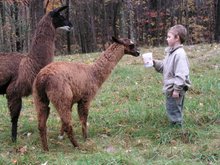
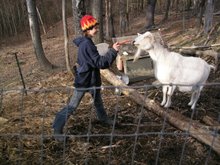

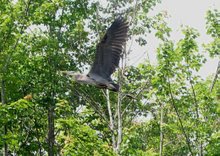

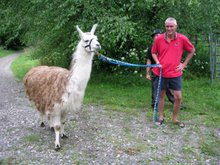
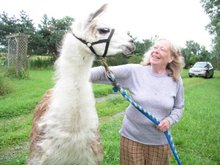
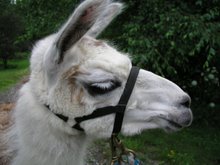








No comments:
Post a Comment